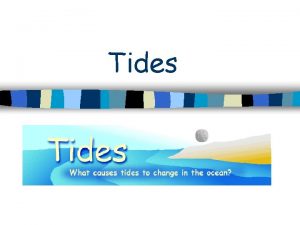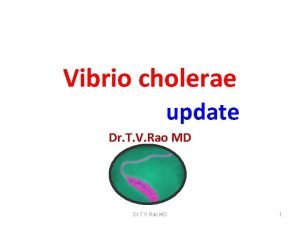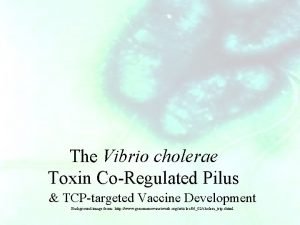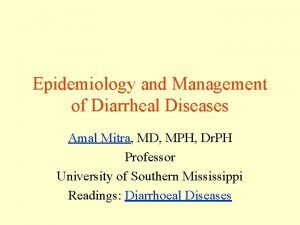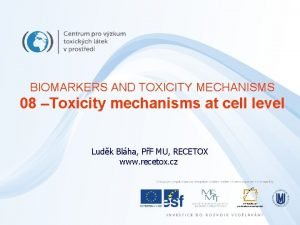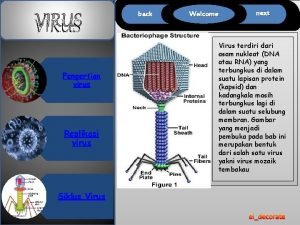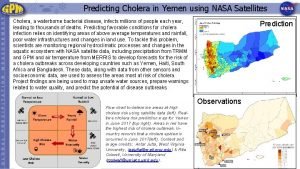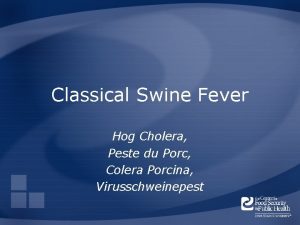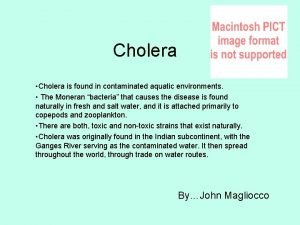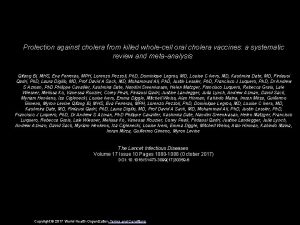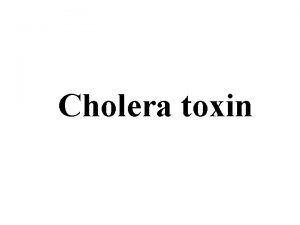Production of Hog Cholera Virus using Tide Cell











- Slides: 11

Production of Hog Cholera Virus using Tide. Cell Bioreactor System www. bioreactorsciences. com A production case study using ST cell line

Comparison study o o Due to significant difference in characteristics of virus strain and host cell line, the optimal process of virus production can be significantly different. In the following slides are requirement of conditions for this specific case of study, on which comparison of Tide. Cell/Bello. Cell system and other commonly used systems are based.

(R 1) High cell density is required to achieve high titer, and reduce medium consumption. o o Tide. Cell: High surface area provided increase cell density up to 10 folds and save culture medium up to 90%. Roller bottle: low cell density due to limitation of surface area Agitated Microcarrier system: the bead density is limited Other Fixed bed system: Yes, but the scale is limited.

(R 2) Virus won’t cause Cytopathic effect, and a long term harvest is achievable. What be done? o o Low shear stress, less detachment and easy medium exchange allows a long harvest cycle in Tide. Cell. over 28 harvest cycles are achieved in Tide. Cell. Roller bottles: Only up to 4 cycles Agitated Microcarrier system: Shear stress is higher. Cells tend to detach during post-infection period Other fixed bed system: Shear stress is higher. Cells tend to detach during post-infection period.

(R 3) Require to sample carrier and observe to determine the infection time by morphology and cell count o All systems are capable of sampling and observation except packed bioreactor systems other than Tide. Cell system

(R 4) Virus is highly unstable: sensitive to temperature. Daily semi-harvest is required. o o Easy to do medium exchange and harvesting without interrupting cell culture process. Roller bottle: Each bottle has to be removed from culture. Microcarrier system: System has to stop and allow microcarrier to settle. Other Fixed bed system: liquid level cannot be lowered than the working volume. Medium exchange is limited

(R 5) Require to use Low serum or zero serum to reduce side effect to pigs o o Low shear stress culture allow serum or serumfree culture environment without causing cell detach and loss. Roller bottle: Cells tend to detach in serum-free culture. Microcarrier system: Cells tend to detach in low serum or serum-free culture environment Other Fixed bed system: Depending on the agitation and recirculation speed during culture.

Process profiles

Results o o Increase titer from 0. 2 mil RIB (roller bottle) to 6 mil. RIB a total 30 fold increase. Increase harvest cycle from 4 (roller bottle) to 28. Save culture medium 1000 L per batch No data on other systems

Summary of result and comparison

Thank you for watching Please visit us @ www. bioreactorsciences. com or www. cescobioproducts. com
 The difference between spring tides and neap tides
The difference between spring tides and neap tides Spring tide vs neap tide
Spring tide vs neap tide The tide rises the tide falls paraphrase
The tide rises the tide falls paraphrase The tide rises, the tide falls
The tide rises, the tide falls Neap tide spring tide
Neap tide spring tide Neap tide spring tide
Neap tide spring tide Post production flow chart
Post production flow chart Selective media for vibrio cholerae
Selective media for vibrio cholerae Toxin-coregulated pilus
Toxin-coregulated pilus Amal mitra
Amal mitra Cholera toxin
Cholera toxin Cholera
Cholera
